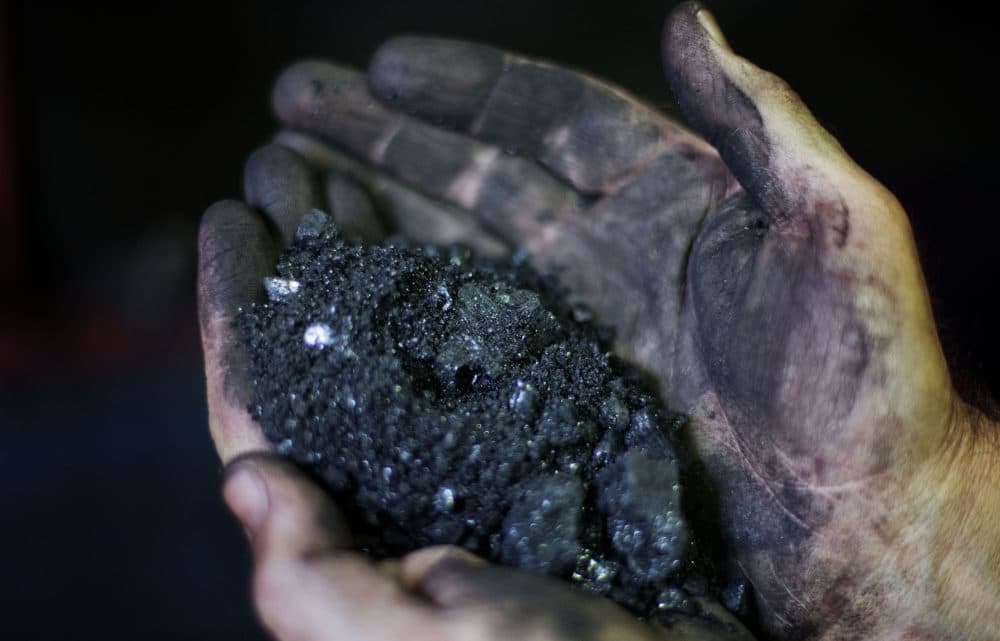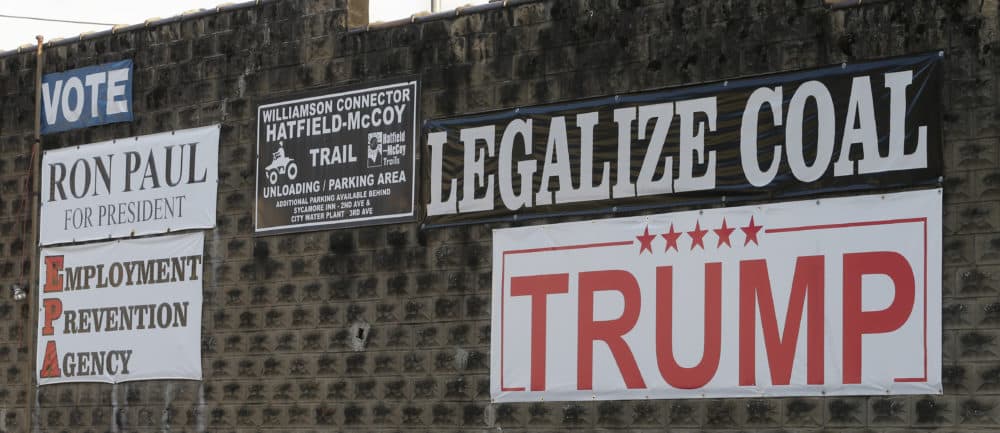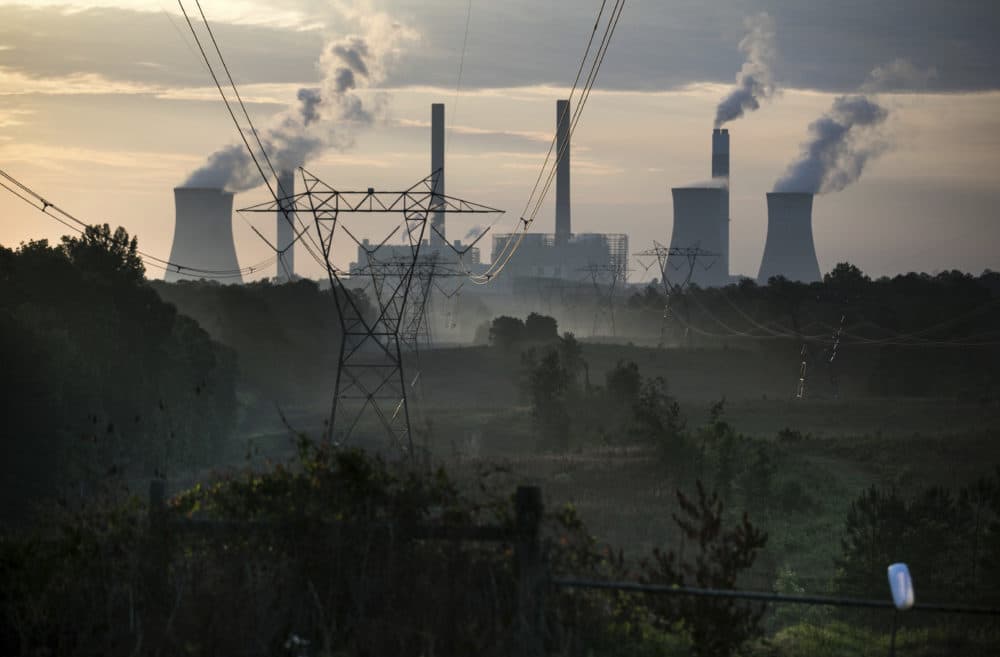Advertisement
Commentary
Coal Mining Is A Dying Industry. So Why Does It Play An Outsized Role In Our Energy Policy?

In the U.S. today, they’re only one out of every 6,100 people. But that small constituency of 53,000 coal miners has a perplexingly disproportionate influence on the nation’s energy policy.
At a rally in West Virginia this week, President Trump unveiled his latest energy initiative, the ostensible purpose of which is to bolster the flagging American coal industry. The real objectives behind his action remain obscure.
The new rules will replace the Clean Power Plan, the Obama-era regulation that, had it ever been implemented, would have further dimmed the already fading prospects for coal in this country. The Obama administration said unequivocally that burning coal to generate electricity puts more carbon dioxide in the atmosphere than we can afford in the era of climate change. But Trump’s rewrite of the Clean Power Plan is a toothless sham — an evisceration of the rules that gives states the right to set their emissions limits and does little or nothing to cut greenhouse gas output. (There are no coal plants left in Massachusetts, and just one in New England — but the pollution caused by coal plants doesn't recognize state boundaries.)
Separately, in another effort to prop up the coal industry, the Department of Energy has decided to force electric utilities to buy power from coal-fired power plants. In this case, the rationale they’ve manufactured centers around a bogus argument about national security and grid reliability.
This curious fixation on coal is a disturbing aberration of the Trump administration, and it begs for an explanation. Coal’s share of electricity generation is plummeting, it employs a small and declining number of people, and its environmental rap sheet is damning. By the EPA's own accounting, their new plan will cause up to 1,400 premature deaths annually by 2030.
So why is the administration so avid in its efforts on coal’s behalf?

An easy, albeit incomplete, answer to that question is money. The coal industry has a long history of generous donations to the Republican Party and to Trump in particular. Coal executives have enjoyed liberal access to the White House. Shortly after the inauguration, coal baron Robert Murray of Murray Energy, one of Trump's major donors, handed the new president his "Action Plan," which was an industry wish list of policy changes favorable to coal. Trump has delivered on most of the items on the list.
Campaign money alone, however, isn’t the whole story. When Trump dons a hard hat and mimes shoveling coal at a rally in West Virginia, he’s tapping into a political vein that connects to many more voters than just those who work in the mines.
There’s a celebrated role in the American mythos for the coal miner — the humble yet heroic figure whose arduous labor unearths the rough spoils of nature. We respect the iconic image of the wizened man in hard hat and headlamp, the whites of his eyes beaming from his sooty face, his jaw set hard.
In the mountains of Appalachia, coal mining is infused in folklore and tradition. As much a heritage as it is an occupation, it has provided work for successive generations of men and women who have raised their families and paid their bills with wages from coal since the early 19th century.
In coal states today, the miner epitomizes the populist notion of the tough, hard-working guy. The “war on coal” — a trope invented by the coal industry — is waged against this noble stereotype. With his defense of the proto-miner, Trump leverages the positive sentiments that coal engenders to amplify and extend his support far beyond the core of the coal community. And that leverage works both ways — a soundbite of Hillary Clinton saying she'd "put a lot of coal miners and coal companies out of business" did critical damage to her campaign.
Two crucial coal states — Ohio and Pennsylvania — voted twice for Obama, but swung to Trump in 2016.
In progressive politics, where mainstream climate science is broadly accepted, coal remains the fossil fuel drawing the harshest criticism. Even modest climate goals aren't achievable without drastic reductions in greenhouse gases from power plants. Realistically, that will mean phasing out coal-fired power generation over the next few decades.
And so coal has become a Rorschach test, seen alternately as an essential good that symbolizes American natural bounty and the virtue of hard work — or as a perpetual anachronism, a toxic malignancy that should have already been eradicated from the nation’s energy landscape. That wedge is useful for political purposes. Trump exploits the divide to polarize and energize his supporters.

Exploitation and American coal have a long association. Miners generate enormous wealth for their bosses, but keep little of it. Counties in the coal country of Kentucky have a per capita income less than half the U.S. average. Black lung — the insidious and deadly disease that slowly robs victims of their breath — hit a 25-year high this year in Appalachia.
But coal doesn’t just kill coal miners. Strip mining and mountain-top removal mining devastate vast tracts of forest, bury streams beneath tons of mining debris, scar the landscape and destroy wildlife habitat. Particulates spewed from smokestacks cause asthma and other respiratory diseases. Coal ash waste from power plants is dumped in ponds that become hazardous liabilities. The causal connection between coal and climate change is beyond doubt.
We may never know all the motivations that underlie Trump’s confounding support for coal. But we do know that the policy is doing real harm to the nation, including, ultimately, the people he purports to help.
